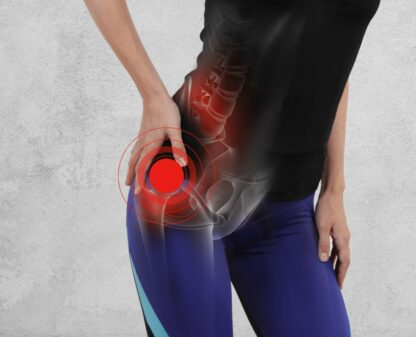Does Abdominal Strengthening during Pregnancy Increase the Risk of Diastasis Recti Abdominis?

Introduction
About a year ago, we published a research review summarizing the evidence around abdominal strengthening postpartum for improving diastasis recti abdominis, examined by Gluppe et al. (2023). In that study, the women all had diastasis recti abdominis for which they participated in an abdominal strengthening program when they were 6-12 months after giving birth. To date, pregnant women are advised to stay active throughout pregnancy and to maintain healthy habits, as the Canadian guideline recommends. However, the same guideline also recommends avoiding abdominal strengthening in women with diastasis recti abdominis during pregnancy “as this may worsen the condition”, based on a study with contrasting results. However, the condition of diastasis recti abdominis keeps being studied since it is associated with weak abdominal muscles, abdominal pain, and hence, reduced quality of life. Therefore, this trial focused on abdominal strengthening during pregnancy.
Methods
This randomized trial included healthy pregnant women in the 24th gestational week (6 months) of pregnancy, and above 18 years of age. They were eligible for the study when they had diastasis recti abdominis, objectified with an inter-recti distance of more than 28mm assessed using ultrasonography at 2 cm above or below the umbilicus at rest. Those with an abdominal wall protrusion along the linea alba were also classified as having diastasis recti abdominis and included. An abdominal wall protrusion was visually evaluated during an abdominal curl-up. Both women who were pregnant for the first time, and who had already given birth before were included.
The 24th gestational week was considered the start of the study from which the baseline measurements were obtained.
The women were randomly assigned to the intervention group or the control group. The intervention group participated in a 12-week abdominal and pelvic floor exercise program. The abdominal strengthening during pregnancy was performed twice a week under supervision and also included 2 home exercise sessions. Three sets of 10 repetitions were performed. The exercises are depicted in the images below.
In the control group, the women were instructed to continue their normal daily activities and to follow the national guidelines for physical activity and general exercise training during pregnancy. These guidelines also included pelvic floor exercises but did not specifically recommend to target the abdominal muscles.
The change in inter-recti distance at 2 cm above and below the umbilicus was the primary outcome. This measurement was obtained using ultrasonography with the woman lying supine. These measurements were collected at baseline and gestation weeks 37 and 6 weeks after giving birth. A difference of 6 mm was considered the minimal clinically important difference (MCID).


Results
105 pregnant women were included in this study. 52 were randomized to the intervention group and 53 to the control group. The groups were similar at baseline.

The ultrasound measurements revealed that the inter-recti distance increased for both groups from baseline to post-intervention (after the 12 weeks) and decreased from post-intervention to follow-up (6 weeks after giving birth).

The authors specified “The post-intervention results have confidence intervals that do not completely exclude the possibility of worthwhile effects in one direction or the other. Specifically, the results at 2 cm above the umbilicus show a slight possibility that the exercises could increase the DRA by 7 mm and the results at 2 cm below the umbilicus show a slight possibility that the exercises could decrease the DRA by 10 mm.”
Questions and thoughts
The results indicate that the effects of abdominal strengthening during pregnancy lead to clinically unimportant changes in diastasis recti abdominis. This result may be disappointing if you’d expected an improvement in the diastasis recti abdominis. However, when you look at the results the other way around, you could also remember that abdominal strengthening during pregnancy does not really increase the inter-recti distance and hence could be considered safe to implement and not contra-indicated.
The growing baby and expansion of the womb also cause the increase in the inter-recti distance in both groups. As specifically mentioned by the authors, the trial did not aim to reduce the inter-recti distance, but rather to study the effects of abdominal strengthening during pregnancy.
The 12-week intervention included several exercises, however, these were not progressed. This can be understood in the light of the growing “burden” of the pregnancy. The authors stated that the increasing impact of the pregnancy could be seen as a natural progression.
Talk nerdy to me
The measurements obtained in this study indicate the safety of abdominal strengthening during pregnancy. Unfortunately, no strength measurements were collected. An earlier study by Gluppe et al. (2023), which examined a 12-week abdominal strengthening intervention, found no improvements after the intervention program. The intervention group of Gluppe’s study improved the thickness of the rectus abdominis, and strength more than the control group. Sadly in the current study, no strength measurements were obtained.
Adherence to the exercise program revealed that half of the participants in the intervention group adhered to at least 80% of the exercise sessions. Only 40% of the included women adhered to at least 80% of the group exercises. This is quite a low number, considering that the group sessions were supervised. This low adherence to the exercise program could at least have impacted the results, and should be seen as a limitation.
Take-home messages
Abdominal strengthening during pregnancy is not related to increases in diastasis recti abdominis and can therefore be implemented along with the advice to stay active and healthy in pregnant women. This study’s result should shift the precautions about abdominal training in healthy pregnant women.
Reference
LEVEL UP YOUR DIFFERENTIAL DIAGNOSIS IN RUNNING RELATED HIP PAIN - FOR FREE!
Don’t run the risk of missing out on potential red flags or ending up treating runners based on a wrong diagnosis! This webinar will prevent you to commit the same mistakes many therapists fall victim to!



